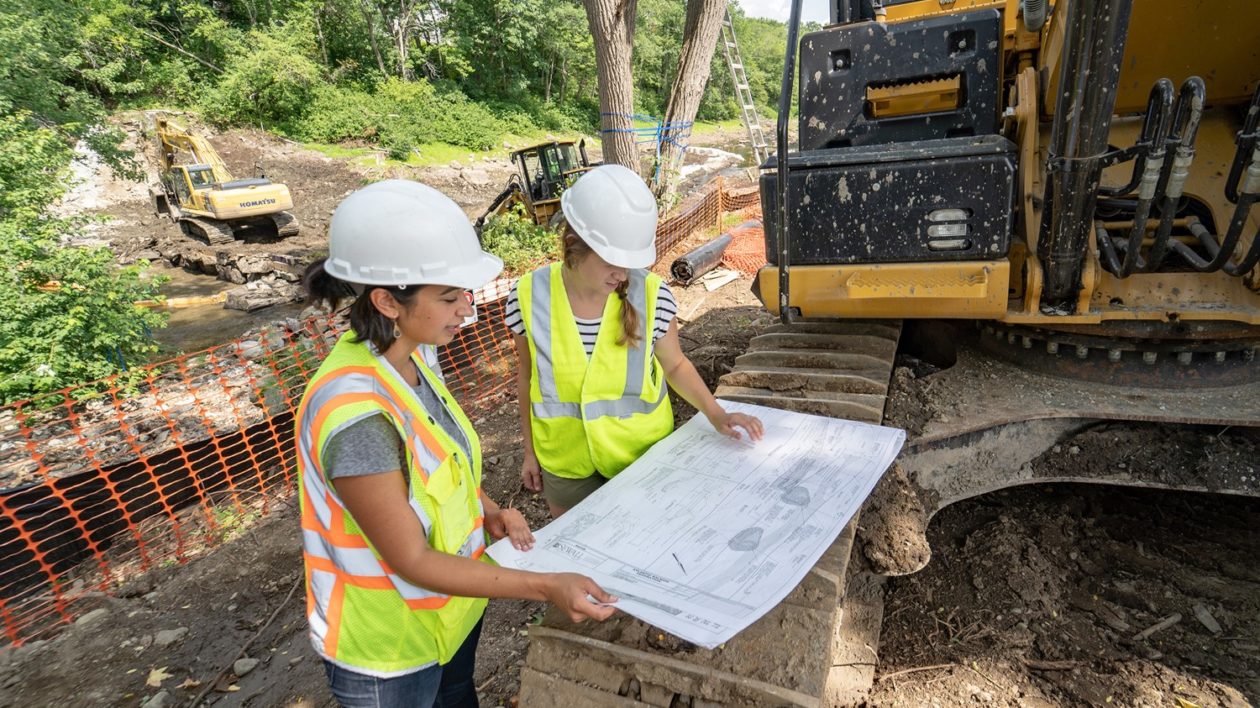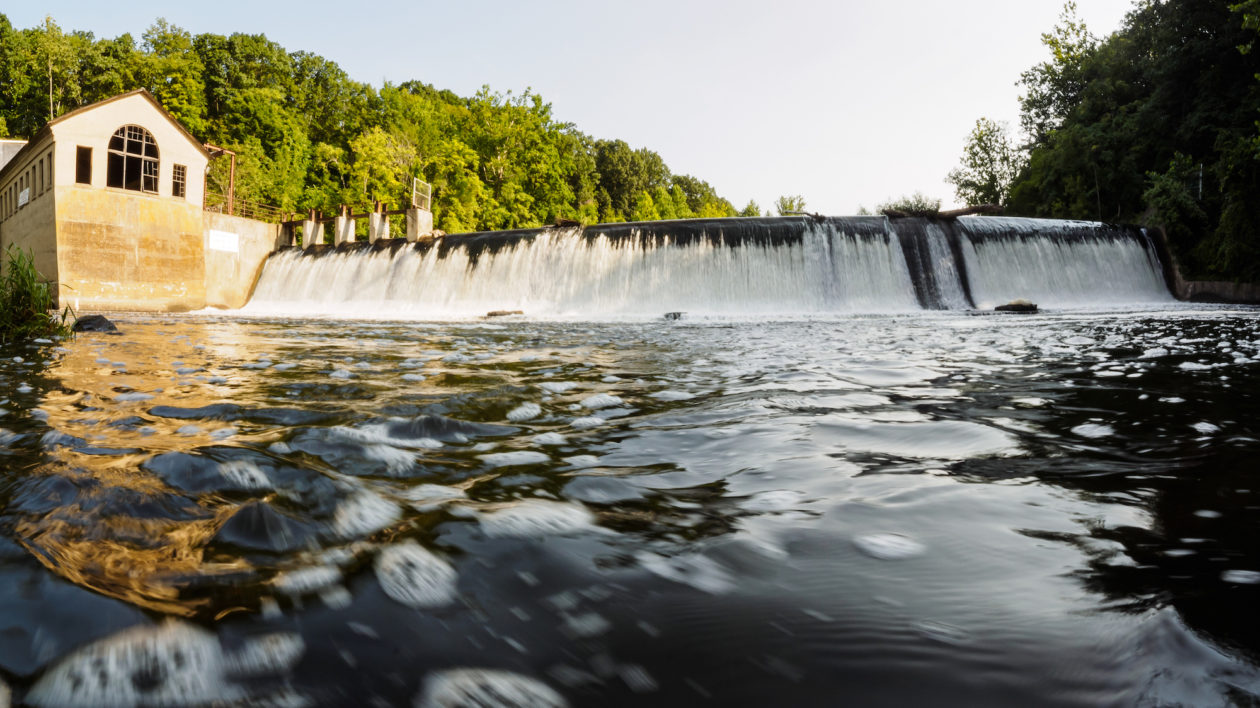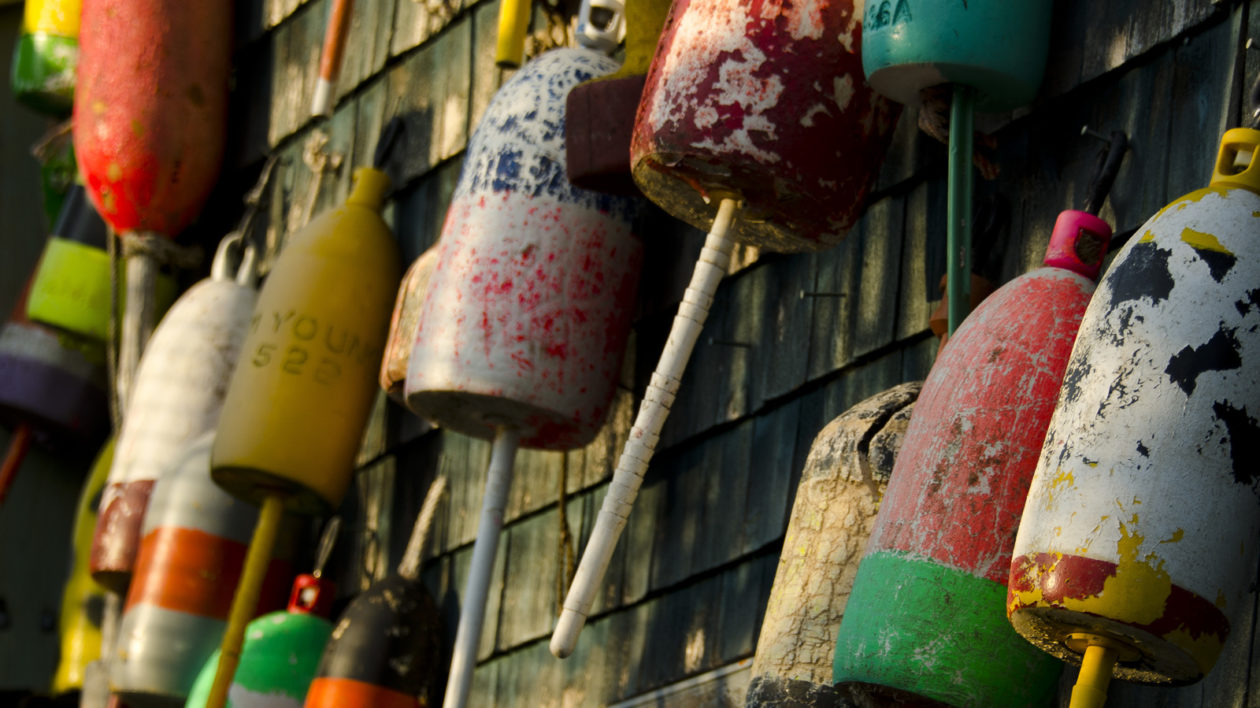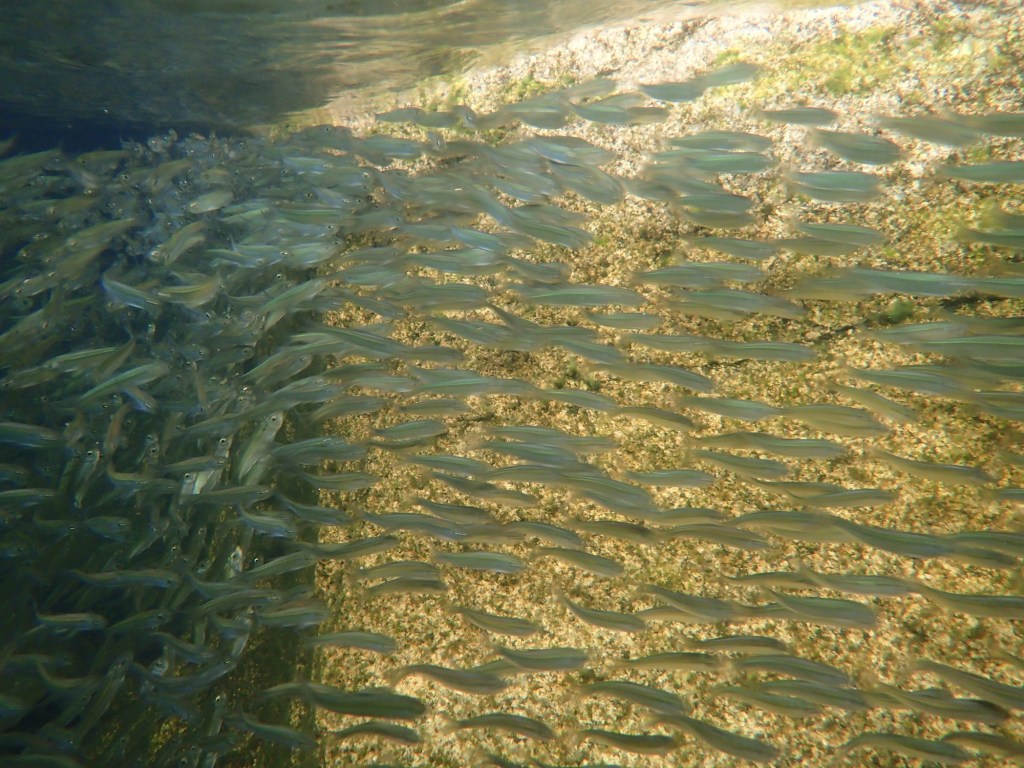A juvenile alewife fins in place as the water rises due to early October rains. It hatched in June and has spent this summer—its entire life—on this Maine river, plucking plankton and small invertebrates off rocks.
The fall rainstorm signals a new part of the herring’s life, the beginning of an epic journey that will take it down a tributary to a much larger river, then into an estuary and out to the Gulf of Maine.
On its own, this herring is beyond inconspicuous in the river. It’s a tiny, silvery fish no bigger than your thumb. But it will be joined on its journey to the sea by millions upon millions of others of its kind, including the closely related blueback herring and the American shad. These river herring form dense schools, and they will be anything but inconspicuous.
Along their journey to the sea and back, they’ll feed everything from striped bass to bald eagles to seals to sharks. They’ll be harvested for food by people lining riverbanks and used as bait in lobster traps. They’ll be celebrated in festivals by indigenous communities and counted by conservationists.
It’s an exuberance of fish. Just 20 years ago, on this Maine river and in many coastal watersheds all along the eastern seaboard, this great migration didn’t exist, at least not in any meaningful way. The river herring and other migratory fish like eels, sturgeon and striped bass have been blocked for centuries by dams, dams that grew obsolete for human purposes but kept on blocking upstream fish migrations and impacting the quality of downstream habitat.
The Nature Conservancy and partners have embarked on an effort to remove obsolete dams and restore thousands of miles of rivers as part of its East Coast Dam Removal Initiative. Removing dams often has dramatic and rapid effects—not only for fish, but also for people. In fact, one of the leading reasons for removing obsolete dams is to improve community safety and the cultural benefits that come with restoring a river.

For Safety’s Sake
The mere mention of dams can incite heated debate around much of the world. Some high-profile dams have formed the backdrop to iconic environmental battles. But these cases obscure a reality about the true nature—and number—of dams.
It’s true that dams can provide a number of beneficial services, including hydropower, irrigation and recreation. But many dams were constructed early in United States history, and they haven’t been actively used in decades or longer.
There are at least 90,000 dams greater than head-height, and more than two million smaller dams and stream barriers throughout the United States. As a result, less than 2 percent of our rivers are free-flowing. Identifying and prioritizing removal of obsolete dams offers many benefits, including improving water quality and wildlife habitat, enhancing recreational opportunities, recharging aquifers and improving human safety.

These old dams can become safety hazards, and often that provides the impetus for removing them. The exact reasons vary dam by dam, and can be highly specific to the community.
For instance, firefighters in the town of Whitefield, Maine could not be assured of adequate water in the Sheepscot River downstream of an obsolete dam due to unreliable water releases below the obsolete dam. “Fire safety was actually the biggest concern, and the big reason people supported the dam removal,” says Charlene Donahue, Selectwoman for the Town of Whitefield. “Our fire department needed to get water year round, and with the dam in place, they couldn’t do that.”
Some people were skeptical that dam removal would offer other benefits, but now most see that the impacts go well beyond better fire safety. “The fisheries have returned and that’s generated interest,” says Donahue. “There’s a beautiful little overlook explaining the story. I think people were blown away with how nice it was. They can appreciate the history, but also appreciate what the river is now.”
A more common safety issue for dams is the risk of failure. Dam failure can destroy homes, property and even lives. In 2005, the town of Taunton, Massachusetts was forced to evacuate during a flood, because it was feared the dam would break. While the dam held, it led the community and others to evaluate the liabilities of living with obsolete dams.
That led to the removal of three dams and the establishment of a fish passage on a fourth dam on the Mill River in the town of Taunton. As with so many dam removals, improving safety was just one of the benefits.
“The dam removals were completed in the winter of 2018,” says Alison Bowden, conservation director of rivers, coasts and oceans for The Nature Conservancy in Massachusetts. “The first day we turned on an underwater camera in the spring, there was a river herring there. That was the first documented herring in Mill River in 200 years.”
The quick return of fish surprises many people, as many migratory fish (including river herring) often return to spawn near where they were born. “Research has shown that 20 percent of fish stray en route back and go to new waters. These fish went up the Mill River and it wasn’t blocked.”
Bowden is one of the Conservancy’s leading scientists involved in researching these herring, to understand both their migrations and importance to ecosystems. She notes that 80 percent of the herring’s life is spent at sea, feeding a whole host of marine organisms. And they’re also vitally important to human culture.
“For indigenous people, the return of herring in the spring was a necessary food source at a time of year when stored supplies were running low,” she says. “When Europeans arrived, many of the earliest writings were about the abundance of fish. The return of herring shows what we can have if we invest in restoration. It’s a living tie to the past.”

For Future Generations
It’s also a tie to the future. For many people who live and recreate along rivers, dam removal and river restoration are highly personal. It could mean a new whitewater run, safer water quality or just a more beautiful view. Often, fish are involved.
Michael Bateman joined a group of friends to purchase a small dairy farm along the Paulins Kill River in New Jersey in 2008. They bought it as a place to explore, hunt and, especially, go trout fishing. They invested in their own river restoration and reforestation activities.
In 2018, the Columbia Dam was removed on the Paulins Kill, downstream of Bateman’s property. “That dam was downstream, so it might not look like it mattered to us,” he says. “But dam removals can help with water temperature. And there are other benefits that we’re just beginning to see.”
He notes that shad have returned to the river, and he caught his first glimpse this year. “You cannot fish for them here, but we are early in this process,” he says. “Just knowing they’re there adds to the experience. It’s wonderful. Shad will change the ecosystem.”
“Dam removals are so important for future generations,” he adds. “Already we are seeing results. But it is my kids and grandkids who will see the real benefits to this river.”

Twenty Years
It’s hard to believe that the dam removal movement began just 20 years ago on Maine’s Kennebec River. At that time, such removals were considered politically unfeasible and unproven. Since then, 1,100 dams have come down.
Two of those were on the Penobscot River in Maine. And it’s Maine that has served as one of the global proving grounds for the dramatic benefits that selective dam removal can provide; the triple-bottom line of social, environmental, and economic improvements. The first Penobscot dam came down in 2012, followed by a second in 2013. And in 2016, a nature-based bypass around a final dam was constructed, connecting the full river for migratory fish for the first time since 1835. Those projects restored more than 2,000 river miles on the Penobscot.
“Just think, only a few years ago we were seeing tens or perhaps hundreds of river herring in this river system. Fish were blocked from accessing 67 percent of the river,” says Joshua Royte, a senior conservation scientist with The Nature Conservancy in Maine. “And this year we counted 2.8 million in the mainstem of the Penobscot.”

“There are anglers who reported catching 100 shad from one rapids this spring,” says Royte. “That rapids, historically called ‘Shad Rips,’ had disappeared when the dams backed up the water. These fish are a foundation of the river’s ecosystem,” he adds. “And they’re a prized bait of lobstermen. There were even alewives sent as relief to Haiti, where they’re a traditional food.”
The connection is clear. Strategic restoration returns fish, which in turn revives local economies. The harvest now supplies the spring lobster industry with 50 percent of their bait needs, avoiding importation costs, the use of less effective bait, and boosting Maine’s most important, $500 million marine fishery.
Habitat restoration also benefits the second most important fishery, the juvenile American eel, which contributed more than $20 million in 2019. And, it is estimated that the restoration of rivers has resulted in fish harvesting permit sales to towns in Maine exceeding $700,000. This is particularly significant in places like the town of Benton, where permit sales equal 15 percent of their town’s annual budget.

For the tiny alewife, the restored and reconnected river is now, simply, home. Its waters are a safe haven for building reserves until that fateful autumn day when falling temperatures and rising waters activate an ancient cue, calling the fish into the downstream current.
Its long journey to the sea is fraught with peril, and only a tiny percentage of its kind will make it back. But if it’s lucky, in four years the fish will return up the same river to spawn. And while it may have to dodge bald eagles and seals, there won’t be a dam blocking its way.




Wonderful article! I’m a member of a local group dedicated to restoring and maintaining a modest midcoast Maine alewife fishery. Presently we are trying to convince an upstream dam owner to allow us to remove the dam for fish passage. Though the dam has not been used for practical purposes in a century, and the owner remains adamant in his stance, we are hopeful he will realize the benefits of a dam-less stream. I will send him a copy of this article and hope it inspires him to remove the dam.
This effort is yet another example of TNC thinking “outside the box” to study an issue, bring in scientific analysis, then work with communities, local governments and supporting organizations to make the needed changes to improve the environment for present and future generations. Great work! You continue to inspire with your creative and effective solutions.
Yes, this is exciting and encouraging. Now if similar efforts could be brought to fruition in the West on traditional salmon rivers quickly enough, perhaps we could help increase the salmon population and prevent the orcas from starving.